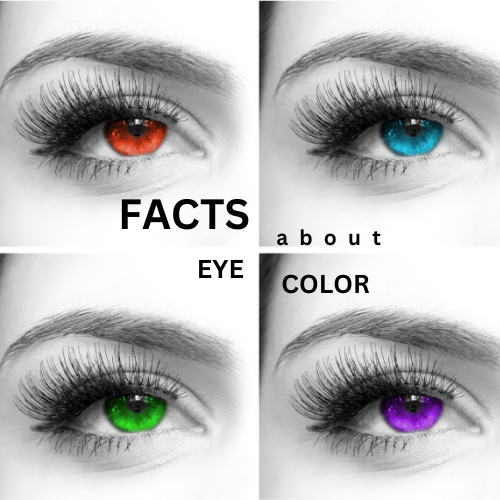Facts About (Eye) Iris Color


“Eye color” is really “iris color.”
Brown, blue, green, hazel, gray, two colors—eyes come in many varieties and every person’s eyes are unique. That’s why iris recognition is used to verify and authenticate an individual’s identity. Iris recognition is extremely reliable and highly accurate, making it the method of choice for law enforcement and border control.
The iris
Iris is a Greek word that means rainbow. In Greek Mythology, Iris was the name of the goddess of the rainbow and she delivered messages to the Gods across a rainbow bridge.
In the eye, the iris is the muscle that opens and closes the pupil to control how much light enters the eye.
Your DNA determines the iris color and the structure, but its random pits, furrows, swirls, and rifts occur during fetal development, which makes every iris unique (even your two irises don’t match each other). The patterns are thought to appear as the fetus opens and closes its developing eyes and iris tissues tighten and fold.
What determines the iris color?
The color of your eyes is determined by how much melanin (a dark brown to black pigment) is in your iris. Melanin is produced in melanocytes—cells that are located in different parts of your body, including:
Melanocytes are located in different areas of your body, including:
- Your hair
- The innermost layer of your skin
- Your pupils and irises
- Areas of your brain
- Areas of your adrenal gland
- The cochlear duct (part of the inner ear)
There are three different types of melanin, including:
- Eumelanin There are two types—black and brown. Eumelanin is responsible for dark colors in skin, iris color and hair.
- Pheomelanin This is a reddish-yellow sulfur-containing melanin pigment that creates the yellow and pink-to-red hues that appear in hair on the lips.
- Neuromelanin While eumelanin and pheomelanin control the colors of things you see (such as skin, hair and eyes), neuromelanin is responsible for the color of your neurons.
Melanin affects your sensitivity to light
How much melanin you have in your iris affects your sensitivity to light. Blue and green eyes have very little melanin and so they are not as effective at blocking out harsh sunlight and damaging UV rays. But all eye colors should be protected from UV rays with UV-blocking sunglasses.
The rarest (eye) iris color
Green has traditionally been called the rarest eye color, but new classifications now put gray as the rarest eye color.
People with gray eyes have little or no melanin in their irises, but they have more collagen in a part of the eye called the stroma. The light scatters off the collagen in a way that makes the eyes appear gray.
Actually, the rarest eye color are eyes that have two colors. It occurs in less than 1% of the world’s population. The condition is called heterochromia and it is fairly common in dogs and cats, but not in humans. Heterochromia is caused by a difference in pigmentation between the eyes (or within one eye).
The word heterochromia comes from ancient Greek and combines “hetero” which means different, with “chroma” which means color.
Complete heterochromia is when one iris is a different color than the other. When part of one iris is a different color than the rest of it, this is called partial heterochromia. Central heterochromia is when there is an inner ring that is a different color than the outer area of the iris.
No matter your eye color, take care of your vision
No matter what your eye color or colors, you need to take care of your eyes. Treat your eyes well, shield them from the sun, and visit your eye care professional for regular examinations.
Gregory Scimeca, M.D.
Ophthalmologist and Medical Director
The Eye Professionals
Our Locations
